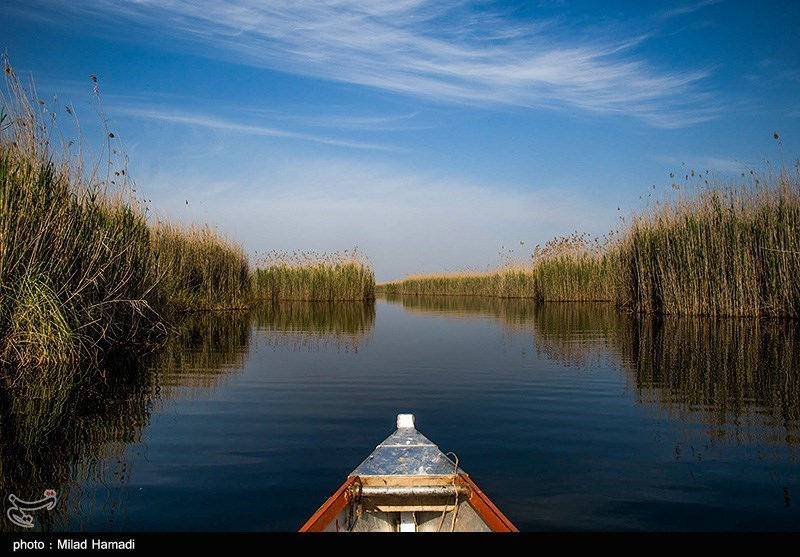Iran, a country rich in natural diversity, is home to some of the most important wetland and coastal ecosystems in the world. These regions not only support unique biodiversity but also serve as critical stopovers for migratory birds traveling along the Eurasian-African flyway. From the Caspian Sea wetlands to the southern coastal ecosystems of the Persian Gulf, Iran’s wetlands are vital to both local and global ecological health. As the world faces increasing environmental threats, preserving these habitats is crucial for sustaining the delicate balance of nature and ensuring the survival of countless species.
A Critical Stopover for Migratory Birds
Iran’s wetlands and coastal regions play a vital role in the survival of migratory birds. Every year, millions of birds pass through or stop in Iran’s wetlands as part of their long migratory routes from breeding grounds in northern Europe and Siberia to warmer southern regions, including Africa and the Middle East. These birds rely on Iran’s wetlands for food, rest, and shelter during their journey, making the country an essential part of the migratory flyway.
Among the most notable of Iran’s migratory visitors is the Siberian crane, a species that stops in the wetlands of the Caspian region. In addition, species such as flamingos, pelicans, and numerous waterfowl make use of Iran’s wetlands to feed and rest before continuing their migration. Iran’s wetlands provide a vital stopover where birds can replenish their energy and find the food necessary for their survival during long-distance migration.

The Wetlands of the Caspian Sea and Northern Iran
The Caspian Sea, Iran’s largest body of water, is bordered by an extensive network of wetlands, marshes, and coastal ecosystems. These wetlands are incredibly diverse, supporting a wide range of flora and fauna. The region is home to various bird species that take advantage of the abundant fish and invertebrates found in the area. Wetlands such as the Anzali Lagoon and the Gilan province marshes are vital habitats for migratory birds, including species like the heron, cormorant, and various types of ducks.
In addition to being a haven for migratory birds, these wetlands also support a range of plant and animal life. The freshwater and brackish water ecosystems host numerous aquatic species, including the Caspian sturgeon, which is famous for producing some of the world’s most sought-after caviar. These wetlands are also a breeding ground for many species of fish, which in turn support the avian population.
The Persian Gulf and the Wetlands of Southern Iran
Southern Iran, bordering the Persian Gulf and the Gulf of Oman, is home to some of the country’s most critical coastal ecosystems. The marshes of the Khuzestan province and the wetlands of the Hormozgan region serve as vital ecosystems for migratory birds, especially in winter. The warm, shallow waters of the Persian Gulf provide an abundance of fish, crustaceans, and mollusks, which are crucial food sources for both migratory and resident bird species.
The coastal wetlands of the Persian Gulf are home to significant populations of wading birds, shorebirds, and seabirds, including the endangered Indian Ocean humpback dolphin and the threatened Arabian Oryx. These ecosystems also support a variety of marine life, including coral reefs, sea grasses, and mangroves, which play an essential role in maintaining the biodiversity of the region.

Threats to Iran’s Wetlands and Coastal Ecosystems
Despite their critical role in global biodiversity, Iran’s wetlands and coastal ecosystems face significant threats. Pollution, habitat loss due to industrialization and urban expansion, climate change, and the over-extraction of water resources have all contributed to the degradation of these valuable habitats. Wetlands like Lake Urmia, once one of the largest saline lakes in the world, have shrunk drastically due to water diversion for agriculture and dam construction.
In addition to human activities, climate change has brought about shifts in rainfall patterns, leading to decreased water levels in many of Iran’s wetlands. The resulting loss of habitat and food sources for migratory birds has serious implications for the survival of these species. As wetlands dry up or become polluted, many bird populations are forced to alter their migration routes or face the risk of extinction.
Conservation Efforts and the Importance of Protection
Iran has taken significant steps toward protecting its wetlands and coastal ecosystems. The government has designated several wetland areas as protected sites, including Ramsar sites, which are internationally recognized for their ecological importance. Additionally, local conservation efforts and collaborations with international organizations have been established to preserve the habitats of migratory birds and other wildlife.
However, there is still much work to be done to ensure the long-term protection of these vital ecosystems. Measures such as sustainable water management, stricter enforcement of environmental regulations, and the restoration of degraded wetlands are essential to reversing the damage caused by over-exploitation and climate change. The active involvement of local communities in conservation efforts and ecotourism can also play a pivotal role in the protection of Iran’s wetland ecosystems.
Conclusion
Iran’s wetlands and coastal ecosystems are not only a paradise for migratory birds but also serve as key components in the global effort to preserve biodiversity. These ecosystems provide vital services, from supporting wildlife to regulating water cycles and mitigating the effects of climate change. As we continue to face unprecedented environmental challenges, the preservation of these ecosystems has never been more urgent. By strengthening conservation efforts, supporting sustainable practices, and raising awareness about the importance of these habitats, we can help protect the migratory birds and other species that rely on Iran’s wetlands and coastal ecosystems for survival.



